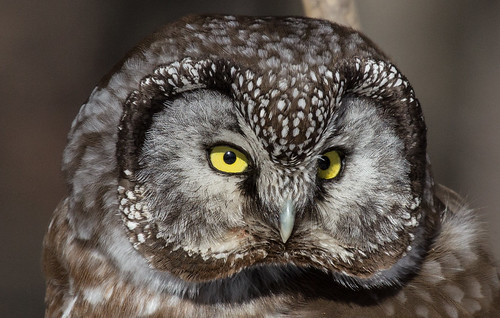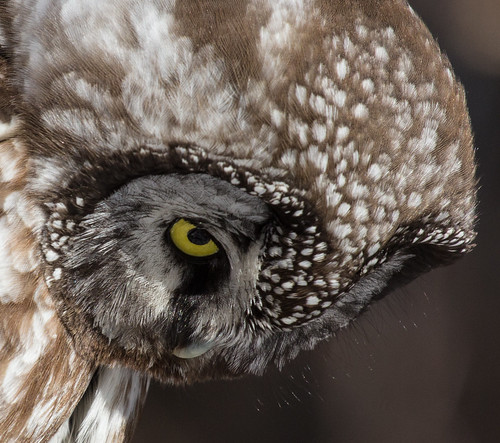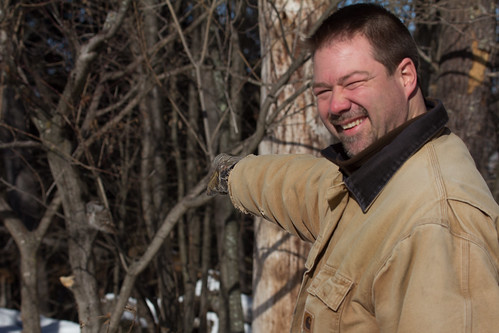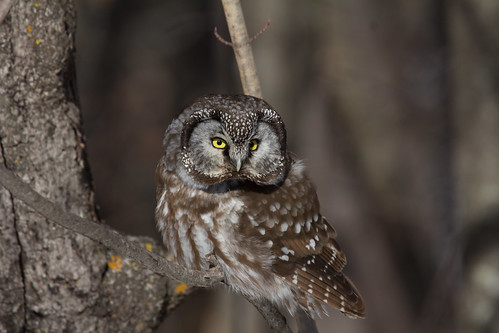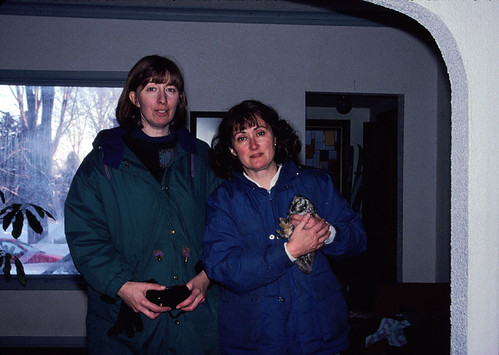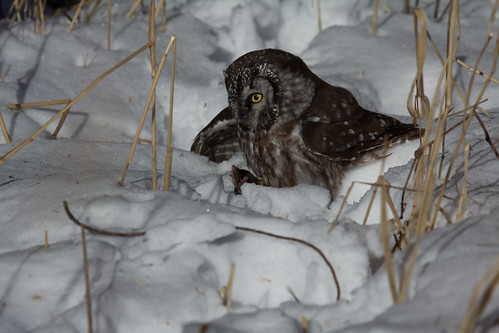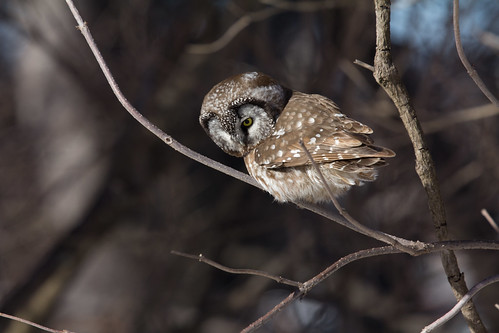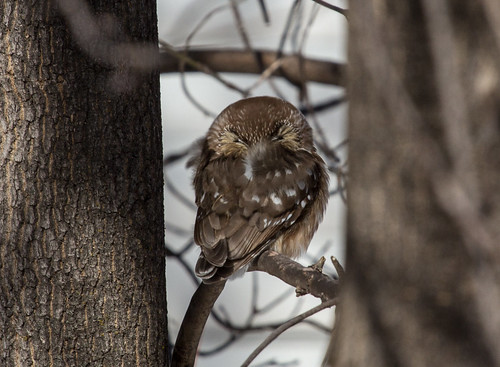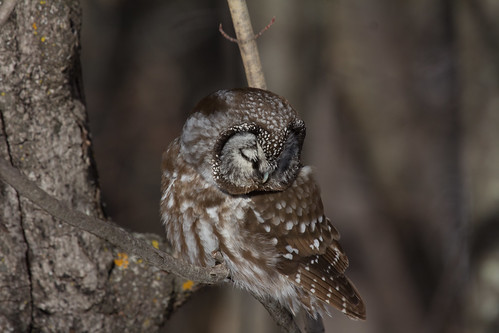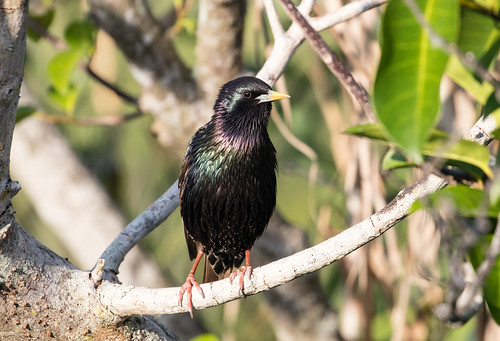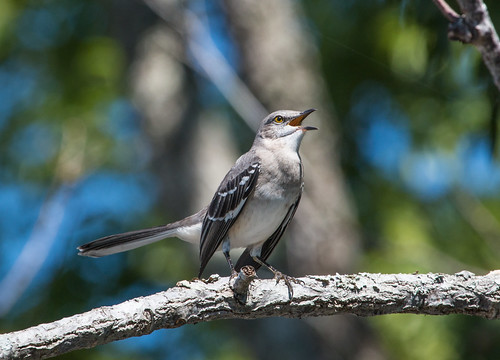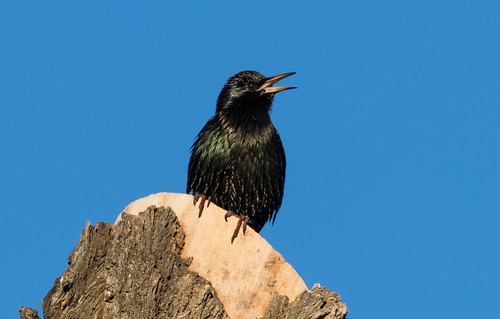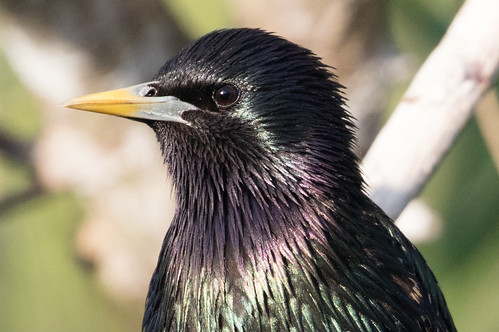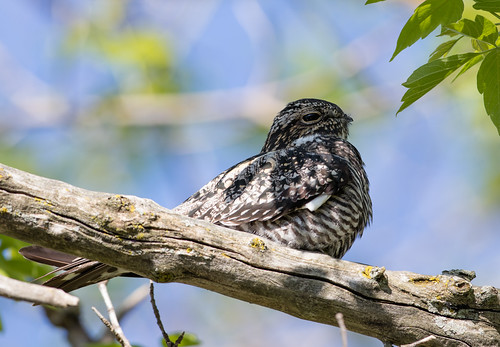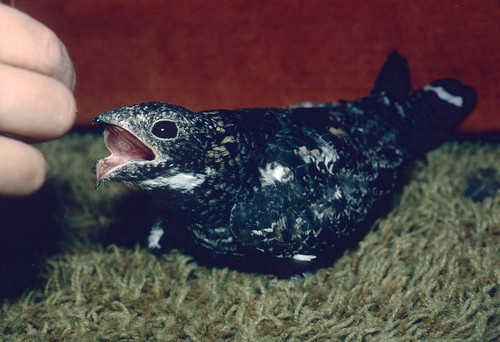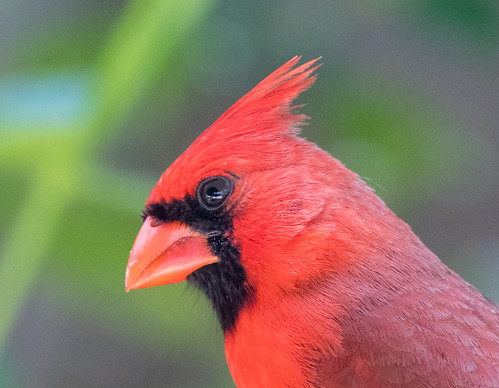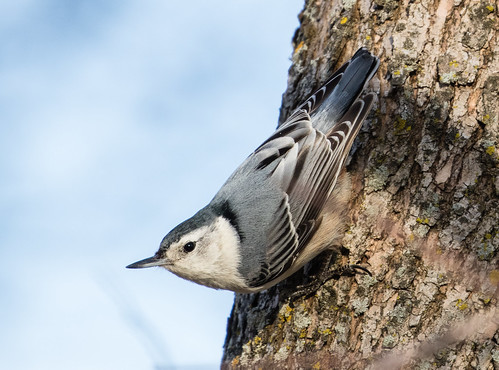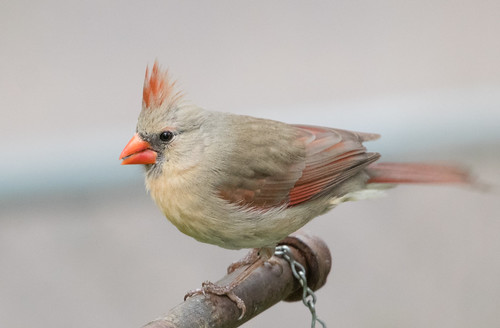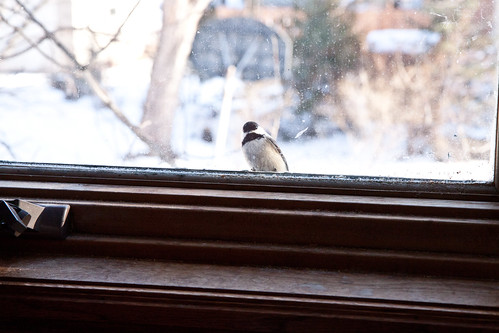It ignored the crowd of people gawking at it—and every single person respectfully stayed on the far side of the road, giving it plenty of space. For the most part it didn’t seem to respond to the birds at the feeder, but whenever Canada Jays flew in, it tracked them.
As fun as it was watching this charismatic little bird who has given hundreds of birders lovely experiences, I couldn’t help but think back seven years, when I experienced my best Boreal Owl EVER.
In December 2012, when she was 93, Russ’s mom came to live with us. She had been suffering some physical ailments and by then, her dementia was making it increasingly difficult for her to manage living alone in the woods. We were happy to have her with us, but the timing was a bit tricky, because I’d been planning to do a Big Year in 2013, and now either Russ or I was going to have to be home virtually all the time. I had to scale back my Big Year plans by a lot, and Russ wouldn’t be able to use his vacation time to go on any of my trips with me.
But on Superb Owl Sunday, which fell on February 3 that year, Russ and I did break away for a little morning jaunt to Two Harbors. We were having something of a Boreal Owl invasion right then, and as we drove up Highway 61, we saw two different clusters of birders with spotting scopes and cameras pointed at what I assumed were Boreal Owls. But I didn’t want to see MY Boreal Owl along the highway, and I did want to find it myself, so we kept going.
There’s a little alley in Two Harbors that runs between a ravine and the backyards of some houses where I’ve had great luck with owls and other cool birds over the years, so that’s where Russ and I headed. We parked the car and were just starting to walk when one of my friends, Jim Lind, saw us and charged down to tell us that a saw-whet owl was roosting in a back yard just a few blocks away. Russ had never met Jim, so the three of us started talking. Suddenly something caught Jim’s eye, and right as he was blurting out, “Look!” I saw it, too—a Boreal Owl, just sitting there, the sun behind us, the bird in perfect light so close that my favorite photo isn’t even cropped!
Russ had seen Boreal Owls before—in our house when people brought them to me while I was a rehabber, and I’d held quite a few in my hands back then.
I’d also seen quite a few in the wild, including one that was calling, as if for joy, in my own backyard at 1 AM the night the Chicago Cubs won the World Series, though in 2013, that one was more than three years in the future.
This Boreal Owl was uniquely special. It stayed in easy view the whole time Russ and I watched. A while after Jim left, we saw it drop down into the snow to capture, kill, and eat a shrew.
Somehow it had decided to ignore us from the start, coming in so close while we were oblivious to its presence, and then when I started clicking away with my camera, it stayed near. I took hundreds of photos, but not one shows the bird meeting my eyes or looking at my camera lens. Either it had figured out that people and cameras pose no danger, or it was hungry enough that it had more important things to focus on.
When it alighted on one stump, it held up its left foot, and I realized it was injured.
Yet it was hunting well, and looked wonderfully fit for a Boreal Owl hunting by day. We watched it for over an hour before we headed up to see the saw-whet owl snoozing on a horizontal branch on a deciduous tree, and then went home.
In the next couple of weeks, several Boreal Owls were picked up dead, and several others ended up being sent to the Raptor Center. A couple of days after Russ’s and my magic encounter, I read of a Boreal Owl with an injured left foot that was picked up a mile or so down the shore. My heart dropped. Day after day, I waited to hear news from the Raptor Center. Some of the Boreal Owls they treated that winter died, but a few weeks later, I heard they were bringing a Boreal Owl to northern Minnesota for release—an owl that, when brought to them a couple of days after February 3, had an injured left foot.
When I look through my Boreal Owl photos, I always thrill at this stunning bird anew, both for giving me the gift of that exceptional encounter I got to share with Russ, and for surviving, the happiest gift of all.
